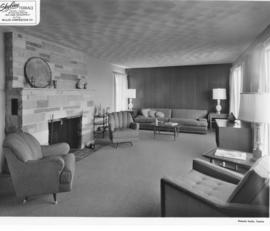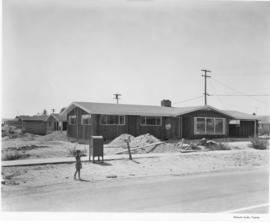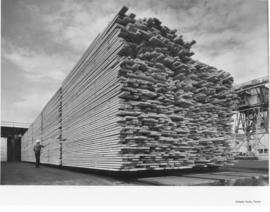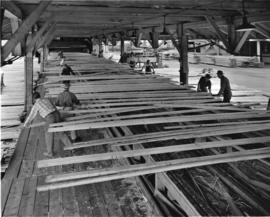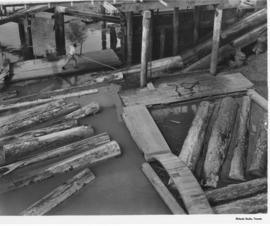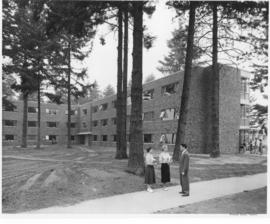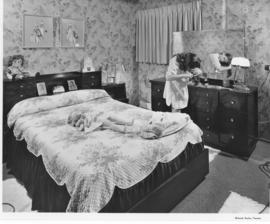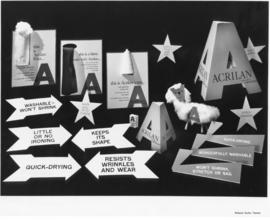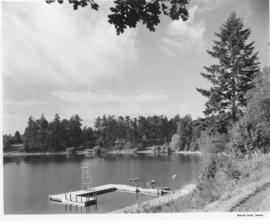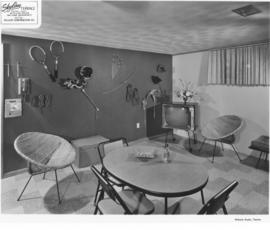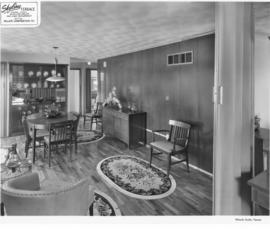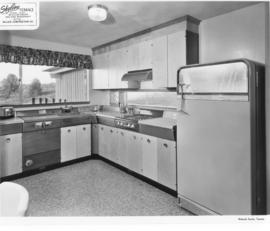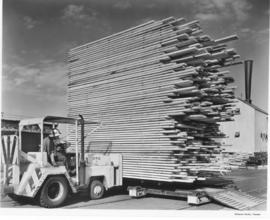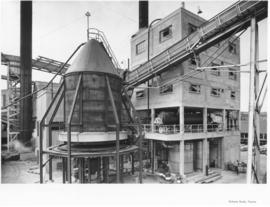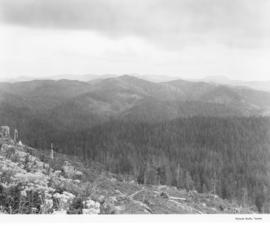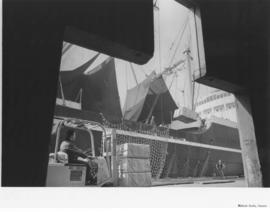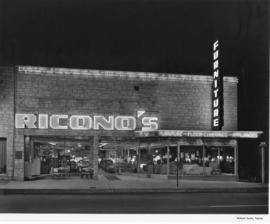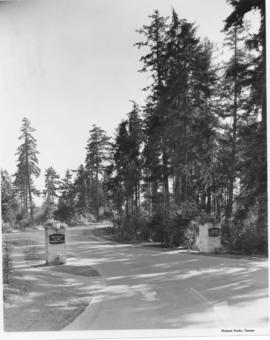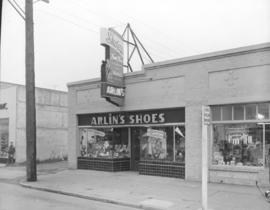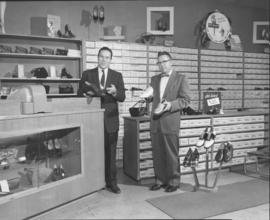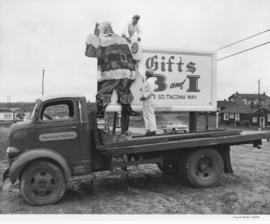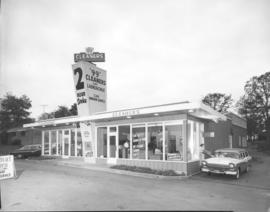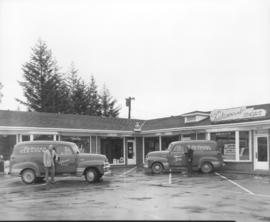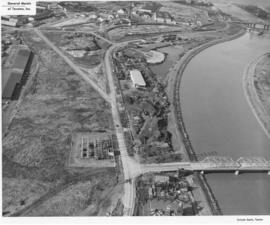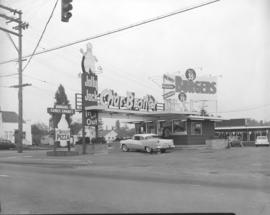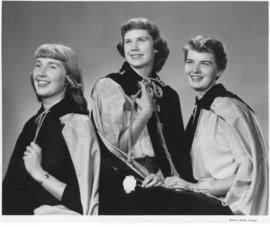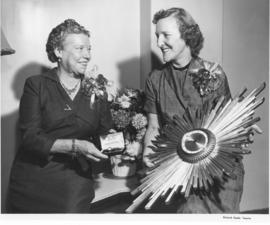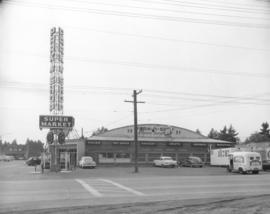ca. 1956. The new West Hall dormitory building at Pacific Lutheran College. The new dorm had been built at a cost of $580,000 and would provide housing for 151 women. Its "L" shape formed a rectangle with the North and South Halls, completed 2 years ago, at the west end of the campus. The building was 3 stories of steel, concrete and masonry construction, with a solid brick exterior. Students posed in front are, left to right, Twila Gillis, Carolee Chindgren and Richard Rhea. 1323 students were expected to start classes at PLC in September of 1956, a 13% increase over 1955. For the first time since World War II, women would outnumber male students 664 to 659. They came from 21 states, 2 territories and 3 foreign countries.They would be taught by 70 full time faculty members and 8 part time teachers. For the first time, a total of 22 majors would be offered. (TNT 10/5/1956, pg. A-8, 10/19/1956, pg. B-1)
Pacific Lutheran College (Parkland)--Buildings; Pacific Lutheran College (Parkland)--1950-1960; Universities & colleges--Parkland; Gillis, Twila; Chindgren, Carolee; Rhea, Richard;
